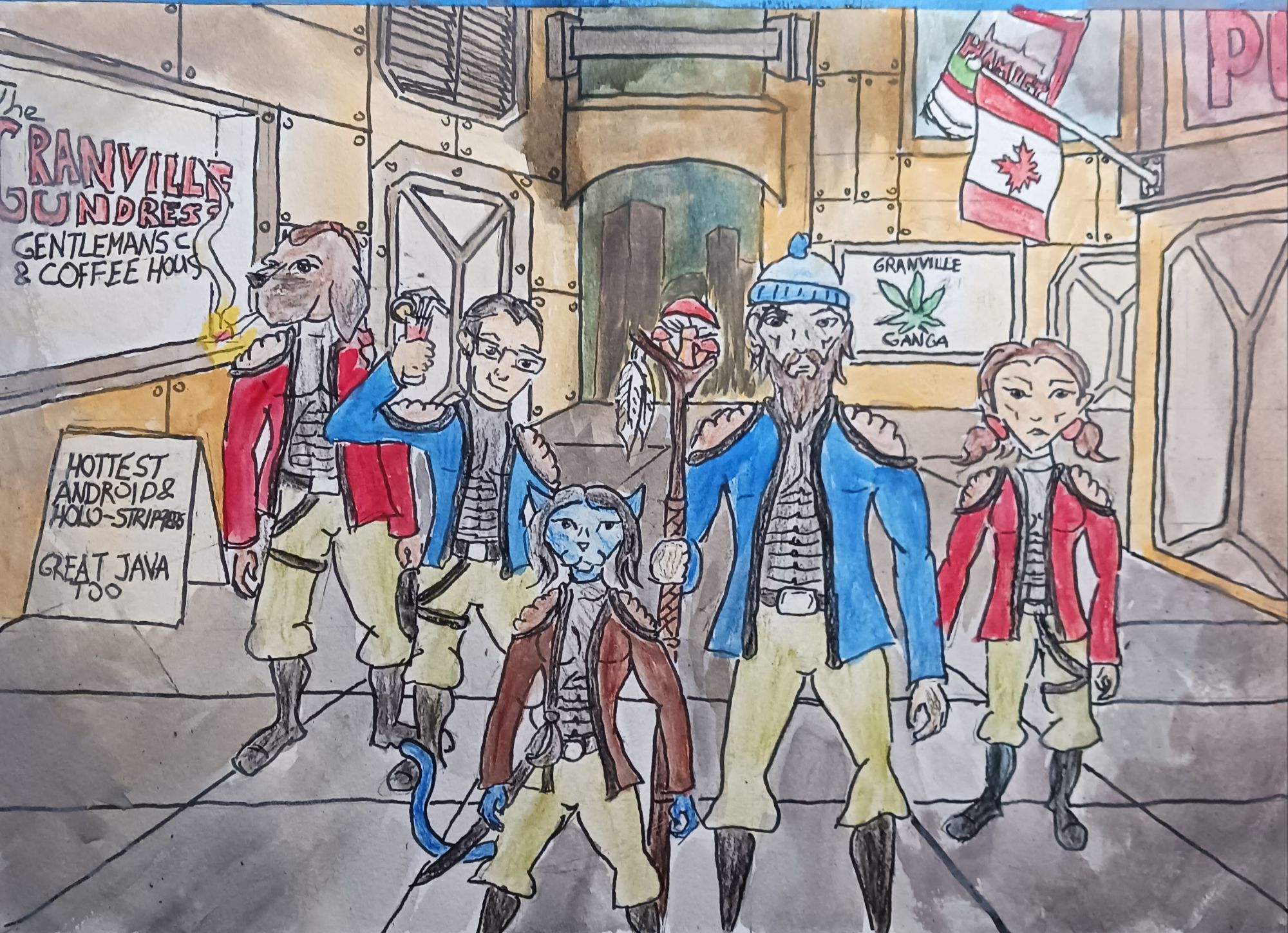Author: Professor Harold MacBride
Affiliation: McGill Educational Center, Montreal System The Montreal System is a prominent star system located within the Quebec Sector of the Canadian Expanse. The system comprises five diverse planets, each exhibiting unique characteristics and contributing to the Montreal System's reputation as a significant hub of activity within the Expanse. Overview • Star: The Montreal System orbits a G-type main-sequence star, providing the necessary conditions for a... More, Quebec Sector
The Montreal System is a prominent star system located within the Quebec Sector of the Canadian Expanse. The system comprises five diverse planets, each exhibiting unique characteristics and contributing to the Montreal System's reputation as a significant hub of activity within the Expanse. Overview • Star: The Montreal System orbits a G-type main-sequence star, providing the necessary conditions for a... More, Quebec Sector Overview A Sector, commonly referred to as a Provincial Sector, is a designated area of space within the broader and diverse cosmic region known as the Canadian Expanse. These Sectors function similarly to provinces, contributing to the organization and governance of this vast territory. Structure and Division The Canadian Expanse is divided into thirteen Provincial Sectors, each with its own... More
Overview A Sector, commonly referred to as a Provincial Sector, is a designated area of space within the broader and diverse cosmic region known as the Canadian Expanse. These Sectors function similarly to provinces, contributing to the organization and governance of this vast territory. Structure and Division The Canadian Expanse is divided into thirteen Provincial Sectors, each with its own... More
Abstract:
The Three Eyed Cowboar (Tricorneus oculatus) has, in recent times, captivated the attention of the scientific community due to its unique genetic makeup and its ecological interactions within the Canadian Expanse. Our studies have provided profound insights into its diverse dietary habits, reproductive behaviors, and overall impact on local ecosystems. However, a recent discovery points to an unforeseen issue involving Earth-derived mammals and parasitic pregnancies.
Introduction:
In the arctic environments of the Nunavut Sector Overview A Sector, commonly referred to as a Provincial Sector, is a designated area of space within the broader and diverse cosmic region known as the Canadian Expanse. These Sectors function similarly to provinces, contributing to the organization and governance of this vast territory. Structure and Division The Canadian Expanse is divided into thirteen Provincial Sectors, each with its own... More, the Three Eyed Cowboar thrives as an enigmatic species exhibiting traits reminiscent of both the Bovidae and Suidae families. A central focus of our investigations has been to comprehend its interactions with native flora and fauna, allowing us to gain a comprehensive understanding of its role within the Canadian Expanse.
Overview A Sector, commonly referred to as a Provincial Sector, is a designated area of space within the broader and diverse cosmic region known as the Canadian Expanse. These Sectors function similarly to provinces, contributing to the organization and governance of this vast territory. Structure and Division The Canadian Expanse is divided into thirteen Provincial Sectors, each with its own... More, the Three Eyed Cowboar thrives as an enigmatic species exhibiting traits reminiscent of both the Bovidae and Suidae families. A central focus of our investigations has been to comprehend its interactions with native flora and fauna, allowing us to gain a comprehensive understanding of its role within the Canadian Expanse.
Unique Ecological Interactions:
Our studies have showcased the Cowboar’s omnivorous diet, contributing to ecosystem balance by regulating population levels of smaller prey species. The animal’s ability to dig, forage, and propagate, as noted in our previous work, remains of critical interest.
A Surprising Revelation:
Recent findings have uncovered a complex and unexpected aspect of the Cowboar’s genetic capabilities. The interspecies hybridization between the Three Eyed Cowboar and Earth-derived mammals, particularly female cows and pigs, has led to parasitic pregnancies. Genetic material from the Cowboar triggers an accelerated and unnaturally large fetal development within the host. This phenomenon results in the birthing process causing substantial distress, often leading to maternal mortality due to the size and number of fetuses.
Ecological and Ethical Considerations:
The implications of parasitic pregnancies resulting from Cowboar interactions with Earth-derived mammals underscore the intricate and unpredictable nature of interspecies interactions within evolving ecosystems. We must carefully evaluate the broader ecological ramifications and potential ethical concerns arising from these interactions. This discovery highlights the importance of a comprehensive approach to studying new species, emphasizing the need to anticipate unforeseen consequences.
Conclusion:
Our ongoing research on the Three Eyed Cowboar continues to unravel the species’ multifaceted role within the Canadian Expanse. The revelation of parasitic pregnancies introduces a unique dimension, prompting us to consider broader ecological and ethical ramifications. As we delve deeper into the interactions between species, our findings emphasize the importance of responsible ecological stewardship and the need to understand and manage novel relationships within our dynamic and evolving ecosystem.
Acknowledgments:
We extend our gratitude to the McGill Educational Center for their support in conducting this research and to the scientific community of the Canadian Expanse for fostering an environment of inquiry and collaboration.



